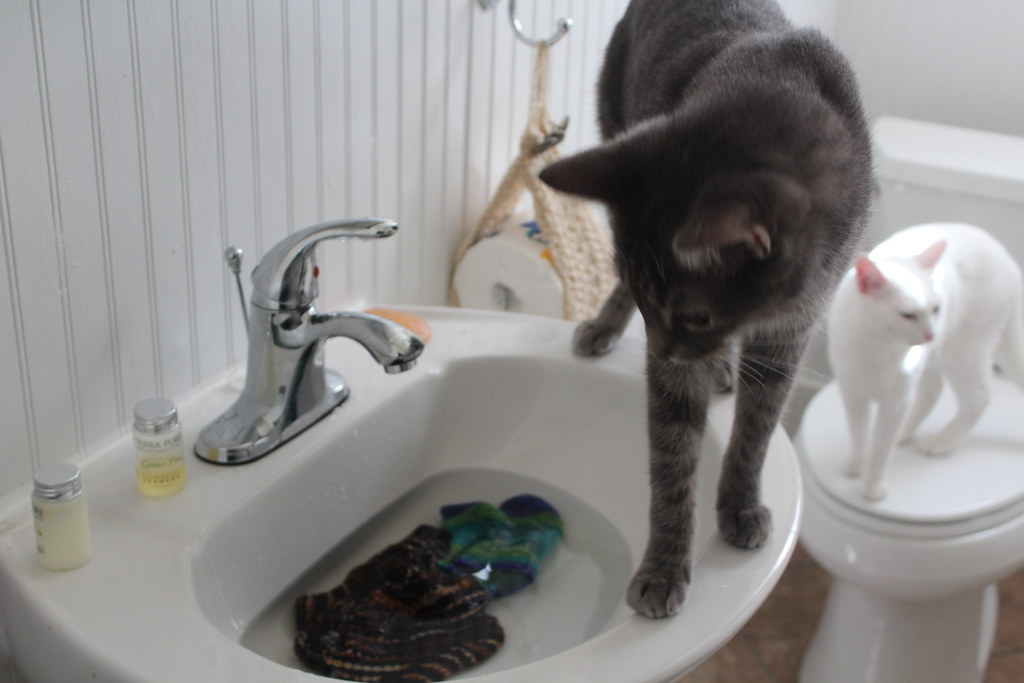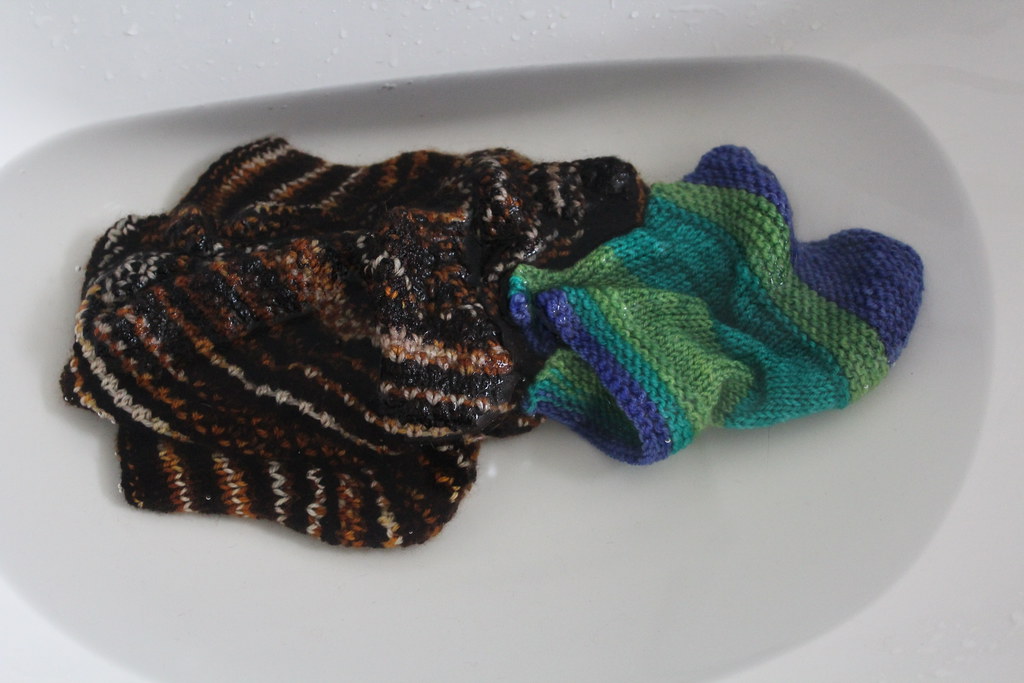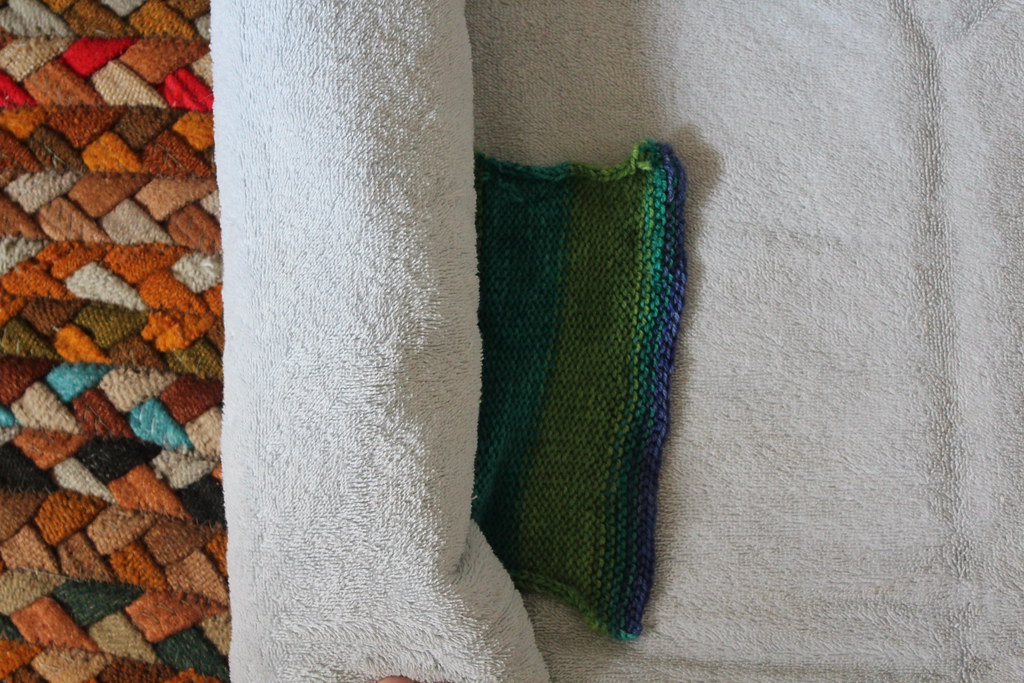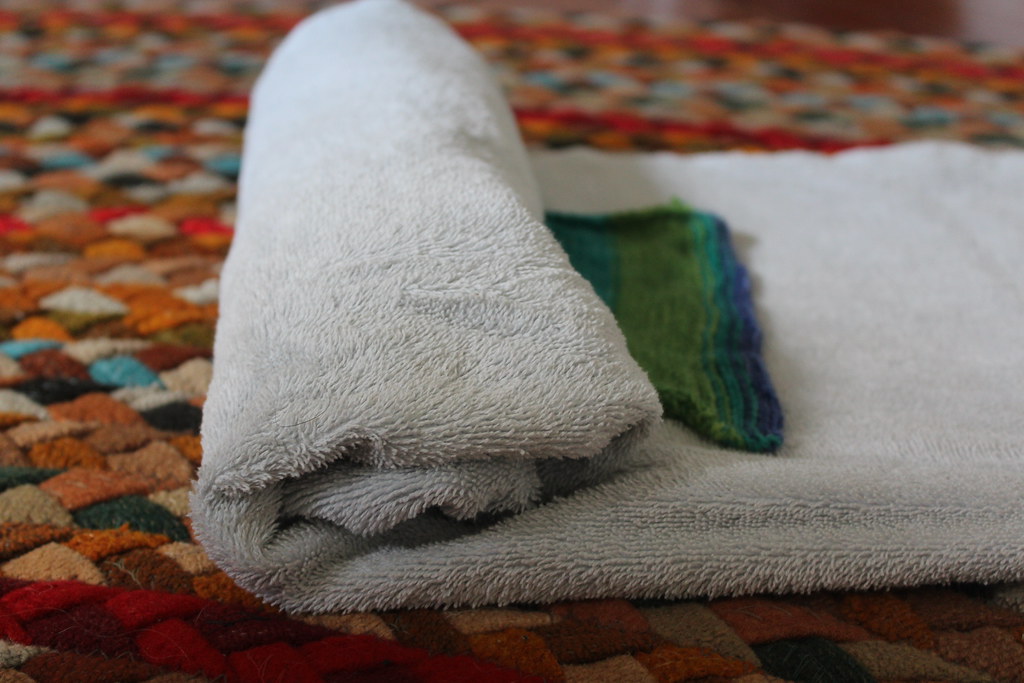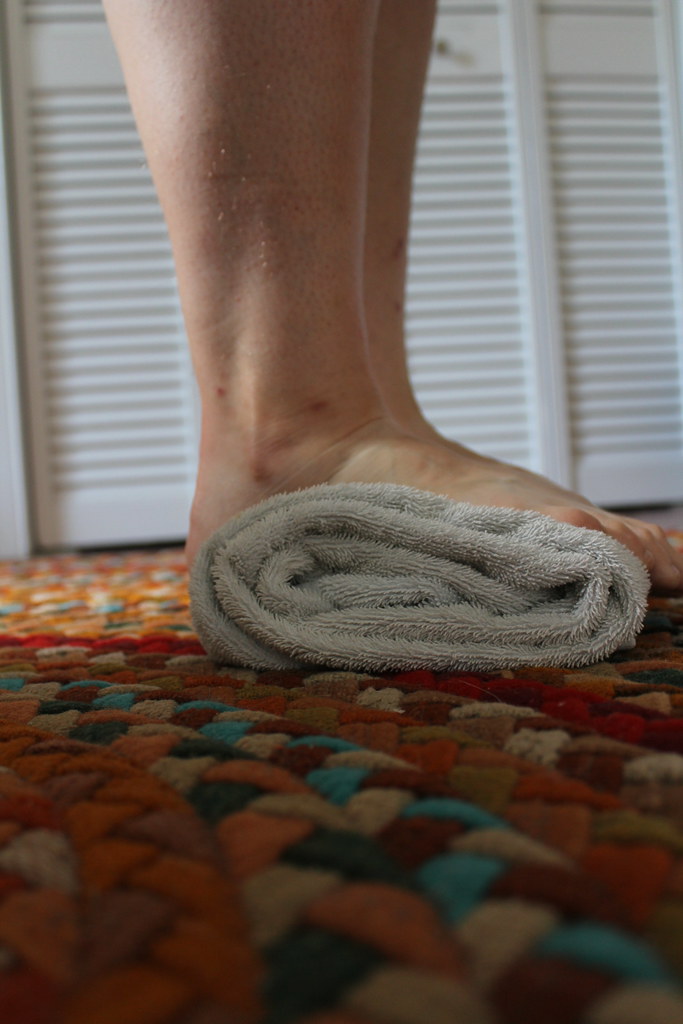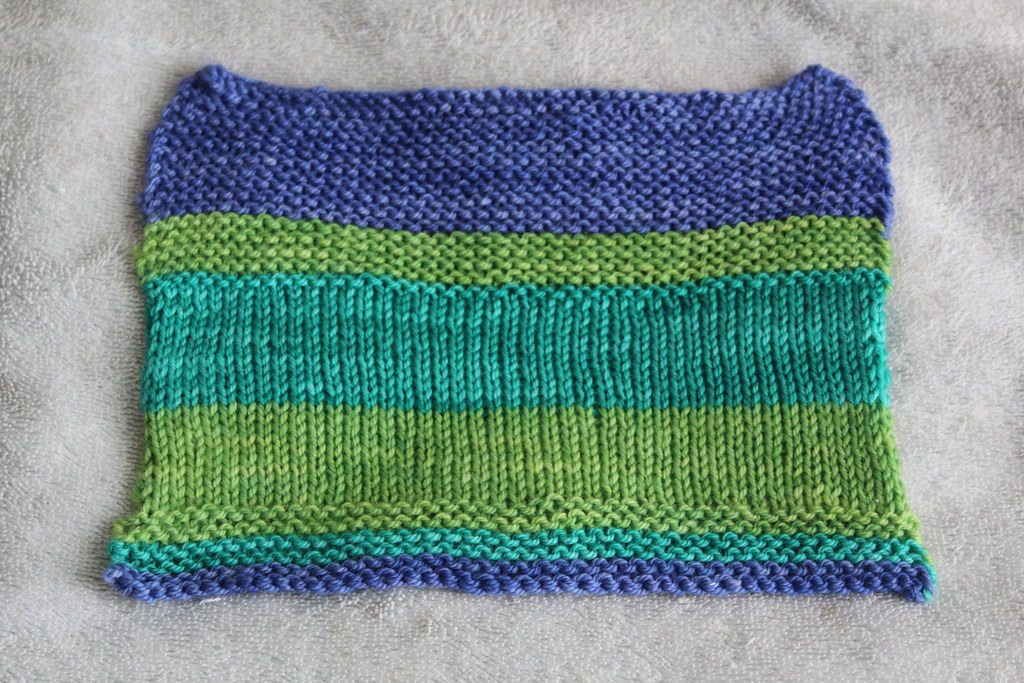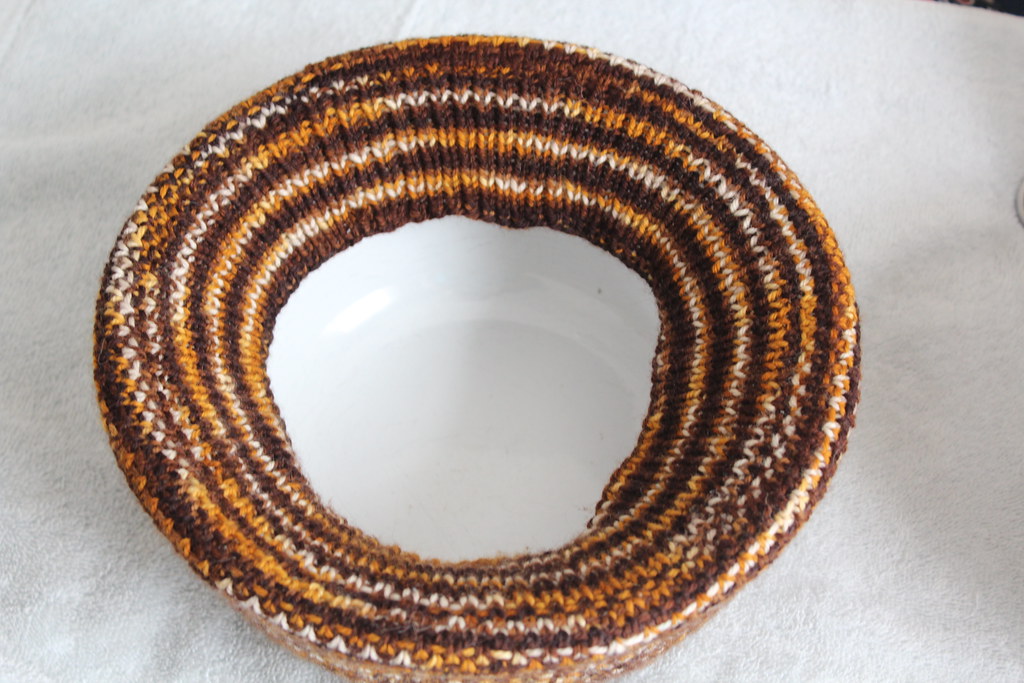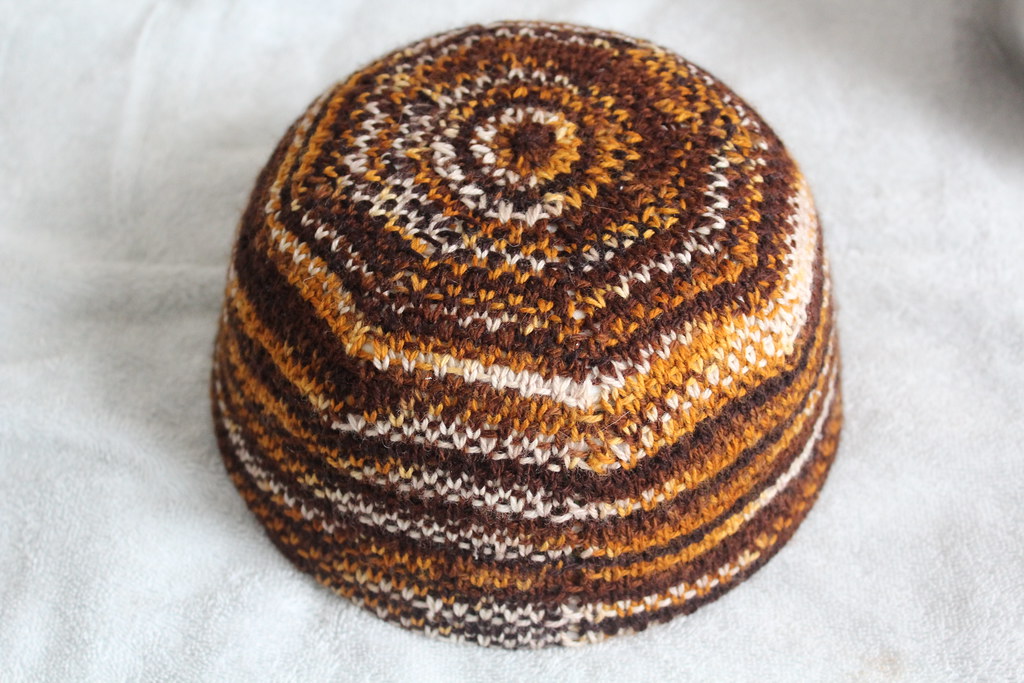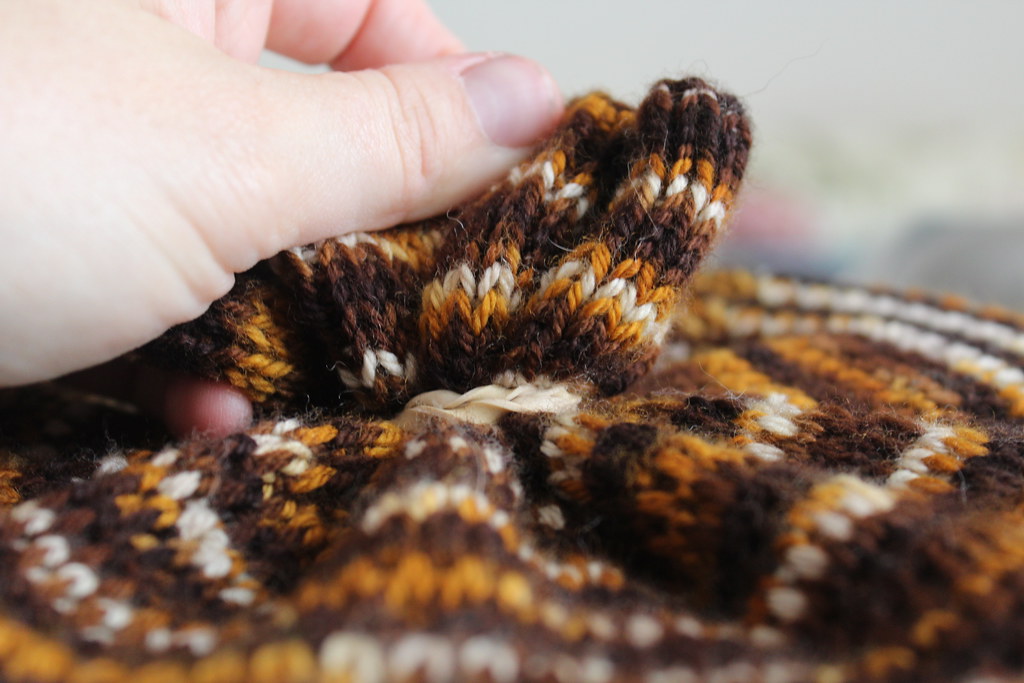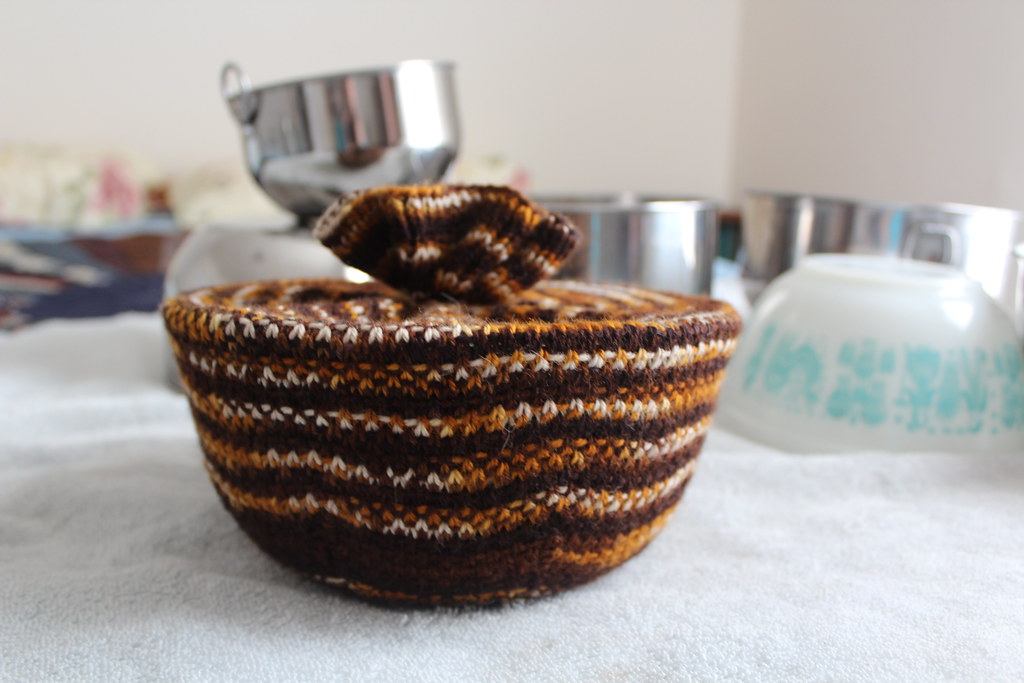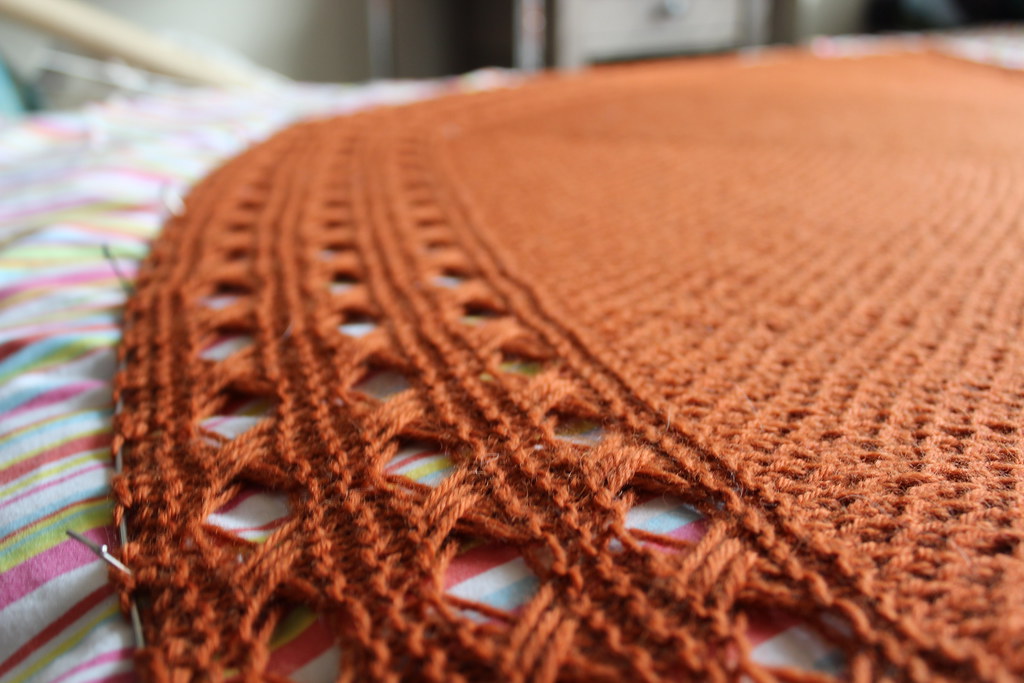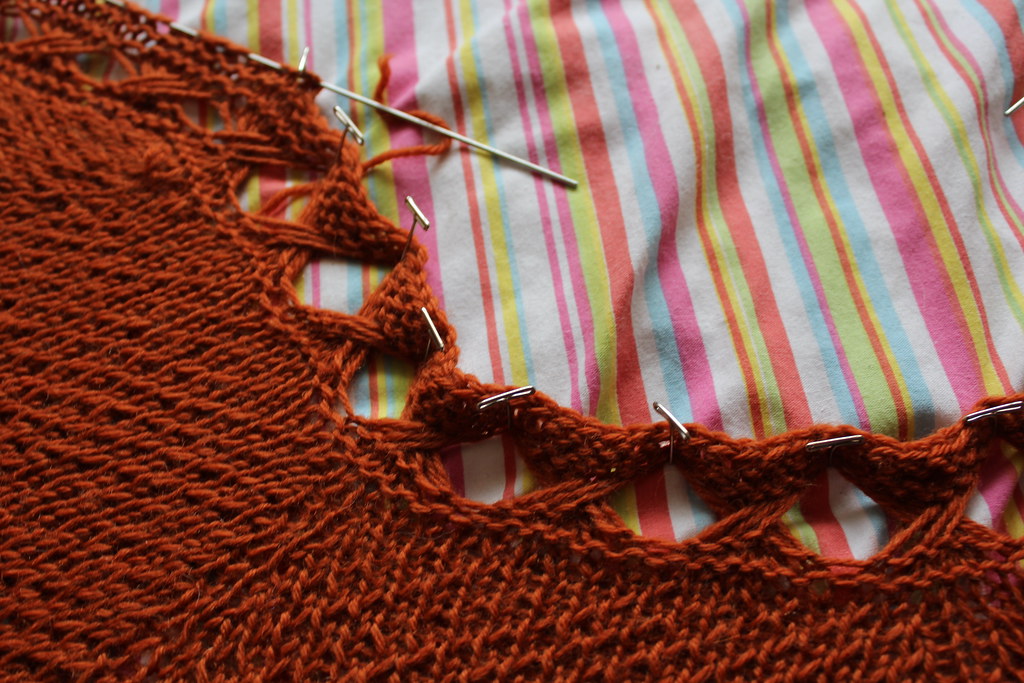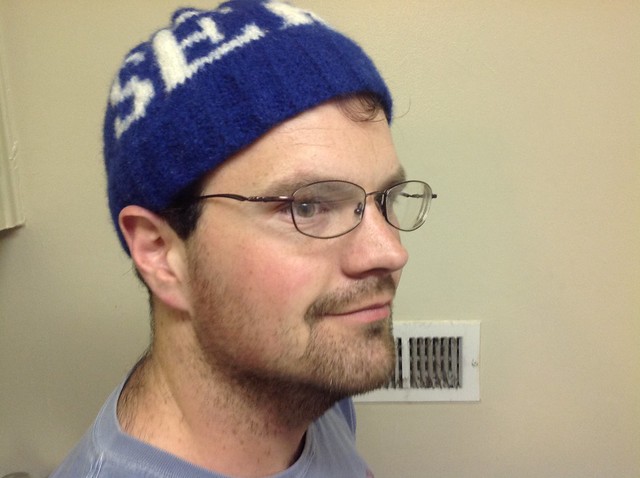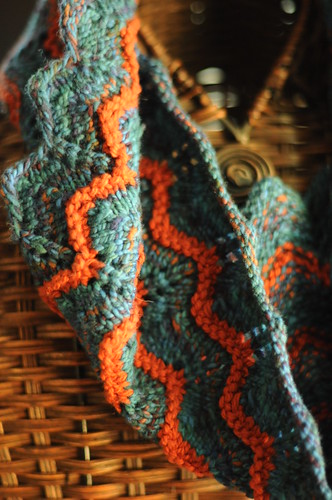Blocking is one of the things which simply transforms knits. When people tell me they don’t like the finished result of their work, my first response is always, “Did you block it?” Simply said, blocking can really, really make your projects shine.
So I’ve got a tutorial for you! Here’s how I block.
You will need:
- The piece you wish to block
- some towels
- some water (cool, but not cold)
- a place where the piece can dry, undisturbed
- optional: pins
- optional: something like Soak or Eculean if you wish for it to smell nice. Or essential oils work too.
- optional: things like blocking wires, pins, or in my case, a rubber band. You’ll see.
- optional: cats to watch what you’re doing (joking)
